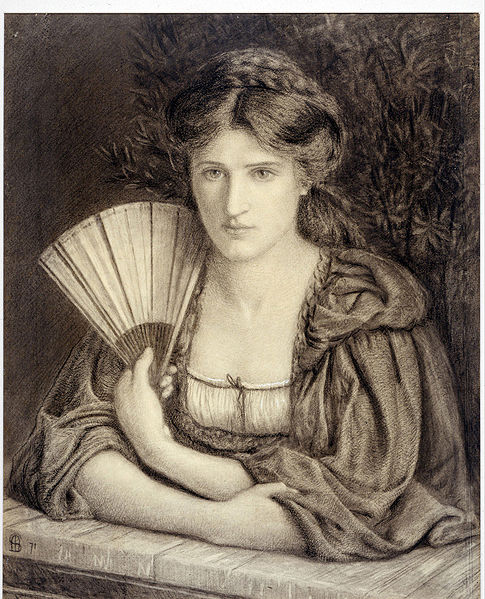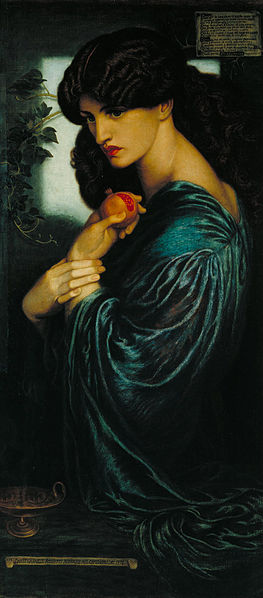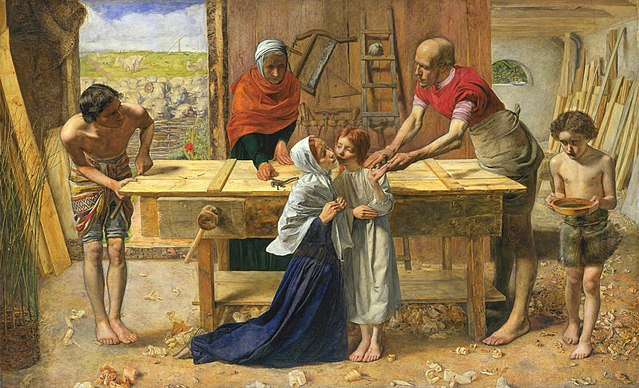Marie Stillman was a British member of the second generation of the Pre-Raphaelite Brotherhood. Of the Pre-Raphaelites, she had one of the longest-running careers, spanning sixty years and producing over one hundred and fifty works, including Love's Messenger and numerous romantic scenes from the Divine Comedy. Though her work with the Brotherhood began as a favourite model, she soon trained and became a respected painter, earning praise from Dante Gabriel Rossetti and others.
Marie Spartali, 1868, photograph by Julia Margaret Cameron.
Self-Portrait, 1871, Delaware Art Museum.
How the Virgin Came to Brother Conrad in Offia and Laid her Son in his Arms, 1892. Watercolour, gouache, and gold paint on paper.
Hypatia, Spartali as model. Originally from the J. Paul Getty Museum, Los Angeles.
Pre-Raphaelite Brotherhood
The Pre-Raphaelite Brotherhood was a group of English painters, poets, and art critics, founded in 1848 by William Holman Hunt, John Everett Millais, Dante Gabriel Rossetti, William Michael Rossetti, James Collinson, Frederic George Stephens and Thomas Woolner who formed a seven-member "Brotherhood" partly modelled on the Nazarene movement. The Brotherhood was only ever a loose association and their principles were shared by other artists of the time, including Ford Madox Brown, Arthur Hughes and Marie Spartali Stillman. Later followers of the principles of the Brotherhood included Edward Burne-Jones, William Morris and John William Waterhouse.
Proserpine, 1874, by Dante Gabriel Rossetti, with Jane Morris as model
Illustration by Holman Hunt of Thomas Woolner's poem "My Beautiful Lady", published in The Germ, 1850
Christ in the House of His Parents, by John Everett Millais, 1850
Ophelia, by John Everett Millais, 1851–52








